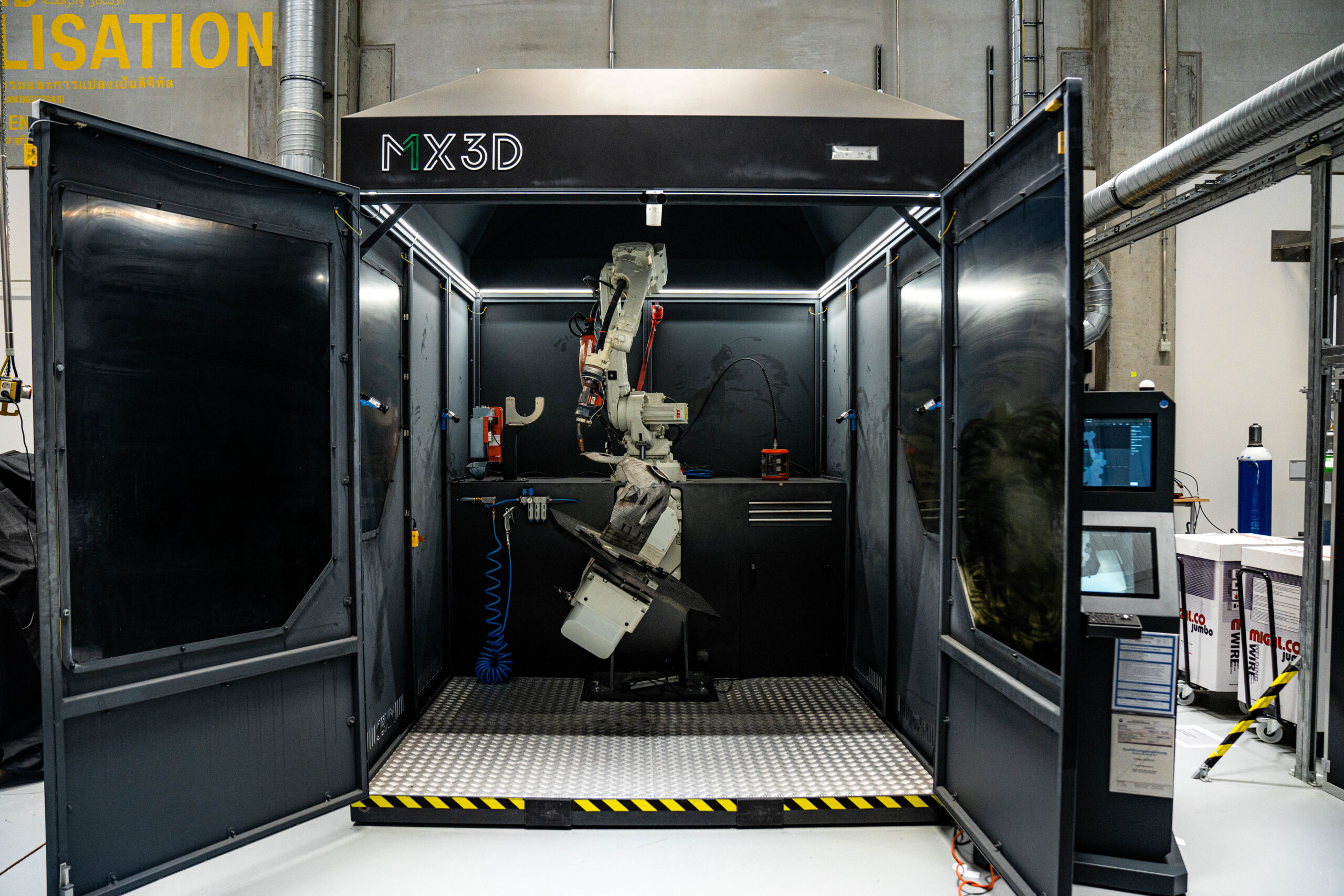The BMW Group has long been a user and innovator in additive manufacturing (AM) technology, dating back nearly 35 years. Nevertheless, the auto giant never fails to impress in the milestones it makes with the technology, most recently in the realm of automation for 3D printing plastic, metal, and sand parts. Circa 2015, the company turned its attention to wire arc additive manufacturing (WAAM), capable of producing large, metal parts quickly and efficiently. Now, according to the automaker, BMW is aiming to begin testing WAAM parts in vehicles starting next year.

WAAM diverges from traditional methods by utilizing a wire—aluminum being the material of choice for vehicle manufacturers—melted via an arc to build layers of welding seams, orchestrated by a software-controlled robot. The technology is able to create hollow structures, yielding components with an exceptional rigidity-to-weight ratio, surpassing the attributes of components produced through conventional die-casting methods. Not only does this result in parts that are both lighter and sturdier, but it also features reduced energy requirements and minimized material waste.

BMW began to exploring WAAM in 2015 before installing a robotic cell in 2021. By 2022, the car company had become a customer of WAAM original equipment manufacturer MX3D. Whereas powder bed fusion—which BMW has now turned into an automated process—is ideal for smaller parts, WAAM is better suited for sections in the vehicle body, drive, and chassis. For this reason, the firm has 3D printed a suspension strut support that is being matched against a die cast counterpart.
“In this early stage it is already clear that the WAAM process can result in lower emissions in the production process. The lower weight of the components, their advantageous material usage ratio, and the option to use renewable energy means that the components can be produced more efficiently,” said Jens Ertel, Head of BMW Additive Manufacturing.

A technical drawing of the WAAM suspension strut.
To create optimal parts for implementation in vehicles, BMW has turned to generative design. Similar to the principles of bionic structures, the initial step involves utilizing only the essential material needed for the component’s topology. In the subsequent fine-tuning phase, additional reinforcement is applied selectively, only in areas where it is required.
“It’s impressive to see how WAAM technology has developed from research to become a flexible tool for not only test components but also series production components. The use of generative design methods enables us to make full use of design freedom and thus the potential of the technology. That was unthinkable just a few years ago,” said Karol Virsik, Head of BMW Group Vehicle Research.
Just as BMW tackled the finishing needs for other 3D printing technologies, via government-backed consortia, the auto company will likely need to do the same for WAAM parts. The components bear a distinctive rippled surface due to the broader welding seams, necessitating additional finishing for critical areas.

WAAM technology, Jens Ertel, Head of BMW Additive Manufacturing, Karol Virsik, Head of BMW Group Vehicle Research.
Initially, the BMW Group intends to centralize the WAAM production of components in at the Additive Manufacturing Campus in Oberschleißheim. However, there are plans to expand production to additional locations in the future and to enable suppliers to utilize this technology as well. Moreover, the possibility exists to integrate this process directly into the assembly line, allowing for the creation of unique components and the production of various parts without the need for new tools, merely by updating the software. Additionally, the sustainability of the process could be enhanced further by escalating the usage of recycled metals. After completing test bench evaluations, the initial vehicle trials are scheduled to commence in 2025.
All images courtesy of BMW.
Subscribe to Our Email Newsletter
Stay up-to-date on all the latest news from the 3D printing industry and receive information and offers from third party vendors.
Print Services
Upload your 3D Models and get them printed quickly and efficiently.
You May Also Like
Havaianas Collaborates with Zellerfeld to Launch 3D Printed Flip-Flops
The shoe of the summer is undoubtedly the flip-flop. Easy on, easy off, your feet won’t get sweaty because there’s not much material, and they’re available in a veritable rainbow...
UCLA Researchers Develop 3D Printed Pen that May Help Detect Parkinson’s Disease
Diagnosing Parkinson’s disease is difficult. Often, early symptoms of the progressive neurological condition may be overlooked, or mistaken for signs of aging. Early diagnosis can help save lives and improve...
Printing Money Episode 30: Q1 2025 Public 3D Printing Earnings Review with Troy Jensen, Cantor Fitzgerald
Printing Money is back with Episode 30, and it’s that quarterly time, so we are happy and thankful to welcome back Troy Jensen (Managing Director, Cantor Fitzgerald) to review the...
Heating Up: 3D Systems’ Scott Green Discusses 3D Printing’s Potential in the Data Center Industry
The relentless rise of NVIDIA, the steadily increasing pledges of major private and public investments in national infrastructure projects around the world, and the general cultural obsession with AI have...
































